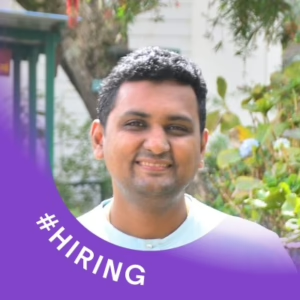The technological change has always had a profound impact on how employees grow and learn. The rapid rise of Generative Artificial Intelligence has ignited a new debate on the future of training and skills. What are the new challenges and possibilities that will be faced by HR? We will explore the impact of AI on L&D, how to balance automation and human skills, as well as what it takes to build truly resilient organizations.
Automating, augmenting and other technological impacts
Discussions on the impact of technology tend to focus on two main effects.
- Automation is a Gen AI that performs all tasks previously performed only by humans.
- Augmentation is when Gen AI partially performs tasks to support or enhance human abilities.
Here, it’s important to remember that automation and enhancement cannot and should be separated. We must avoid a one-sided approach, regardless of the timeframes or scale. We should instead accept the way they can impact each other.
The automation-augmentation balancing act
For example, can be used to automate large information searches. We should then use augmentation in order to integrate with human abilities for intuitive and holistic judgments, such as choosing options and evaluating situations.
It is not easy to balance automation and augmenting work. To fully understand the future of work, we will need to examine their effects regularly and critically.
Anxiety and aspirations
A second consideration is the way automation or augmentation makes you feel. Future-of-Work Anxieties can be generated by automation about AI replacing many jobs. Future-of-Work Aspirations can be generated by augmentation, which requires future-proof social-emotional skills.
There is also a need for better understanding of how AI will impact existing gender, racial and class inequalities, across different occupations such as white-collars, blue-collars and pink-collars workers.
Adopting Technology – A Broader Lens
In addition to automation and enhancement, technology adoption can have a range of impacts. These include:
- Transferring skills from one person to another.
- Create new tasks or jobs.
- Remote work is possible.
- The time allotted for the work is not sufficient.
How managers and HR deal with technological impacts has implications on “good work” that is done with dignity, autonomy and equality. “High-road” approachesput people’s well-being and contribution to productivity at the forefront. low-road approaches, on the other hand, can lead to poor-quality jobs, which are harmful for individuals and society.
The degradation of human abilities and skills through deskilling
In many advanced economies, commentators and academics have expressed concern about the fact that, while technological advancements have increased economic growth and productivity overall, income and employment prospects for most workers have not kept pace.
The “deskilling hypothesis” of political economist Harry Braverman from the 1970s is relevant here. He claims that technological advances, coupled with powerful managers and organisations, lead to a greater level of control over planning and designing work. Employees are reduced to performing narrow, specific tasks and their skills are eroded.
Growing dependence on technology
Consider our reliance on complex and widespread forms of automation and computing, including GPS, autopilots and Google searches. In a piece on the topic, Nicholas Carr warns that we are at risk of being trapped by electronic screens and data. Our cognitive and manual skills will also be further eroded.
The evolution of AI has raised concerns about the impact on our mental health and brain.
GenAI and critical thinking
Recent research suggests that a greater reliance on GenAI could diminish problem-solving skills and critical thinking. We need to consider our use of GenAI, challenging and interrogating its ‘frictionless outputs in order to avoid a deterioration or flattening of thinking skills.
Human oversight is lacking
The changes will also affect the human oversight of safety, resilience and sustainability in complex technological systems. The risk of causing errors and failures that are disruptive and potentially disastrous is a relatively rare occurrence. This can have a negative impact on many stakeholders.
Designing and engineering resilient system
Generative AI may be initially viewed as a simple tool to support employees in their everyday lives. It will ultimately underpin larger, more complex, and autonomous systems.
Lessons can be learned from complex technological systems that have a proven safety and automation record, like nuclear reactors or aviation. These systems are regarded as “ultra-safe” or “almost completely safe” by the designers, operators, and other users.
Air France plane crash 2009: Insights
As my collaborative work about the 2009 Air France crash shows, the sophistication of these technologies can lead to paradoxes and ironies. Technology can act in unexpected ways when it is placed in unusual circumstances. Human operators are often unable to understand and respond in such situations.
It is important to note that the “ultra-safety” of these transportation systems does not translate directly to other technologies or environments such as autonomous cars.
Red flags for co-pilots, auto-pilots, and other drivers
Of course, not all contexts for users are as dramatic. The language used to describe AI as a ‘copilot’, or humans as ‘on auto-pilot’ when relying on technology is telling. If AI is envisioned as a way to ‘free people up’ of their work, then it’s concerning if this comes at the cost of human connections, relationships, and skills.
The technological developments are not isolated. They are interconnected with, and built on top of, many other devices and processes, data sets and systems. It is very difficult to undo the legacy left by these technologies.
In the end, our ability to deal with technology safety is a function of both top-down and bottom up interactions, and trade-offs, between different technologies and people, and their goals.
Final Thoughts
In the future, perhaps we’ll all have to think like operators who work within complex systems. What does this mean to HR and L&D practitioners working with AI technology in different workplace scenarios? Next steps are important:
- Work closely with early adopters and enthusiasts to test your assumptions and definitions of technology.
- Focus on cultivating a culture that encourages an open and balanced discussion of where AI is/is not able to help in terms of workload, understanding issues, reaching goals, and improving experience.
- Avoid using a “rip and replace” implementation approach. Consider carefully what will be lost through AI and what human abilities will remain critical. Base your evaluations on risk and trade-off analysis.
- Consider using approaches that are based on resilient engineering, and social-technical systems. These frameworks and tools provide a way to understand how tasks, people and technology can be brought together in a system.
- To support human productivity and well-being, ensure that the principles of “good work” are adhered to during technology adoption.
- As much as possible, make AI environments safe.


